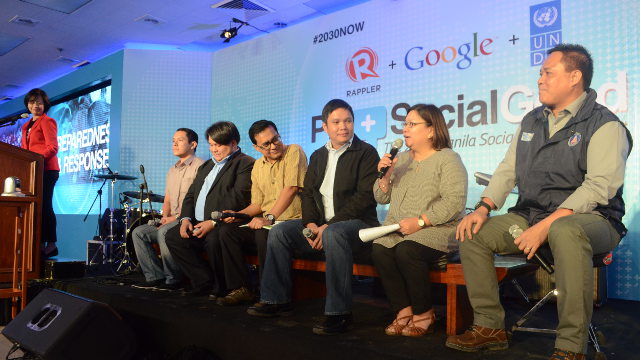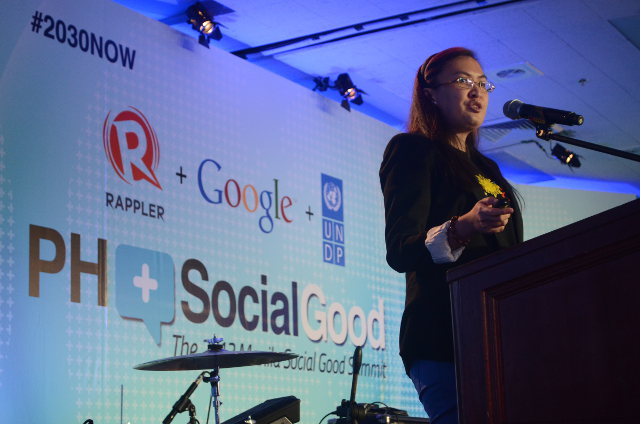SUMMARY
This is AI generated summarization, which may have errors. For context, always refer to the full article.

MANILA, Philippines – When it comes to disasters, preparedness is always better than response.
That was the key lesson shared by a panel of professionals from the government, the academe, and the private sector at the PH+SocialGood Summit 2013 on Saturday, September 21.
In a discussion on disaster response and preparedness, Lt Col Edwin Sadang of the Office of Civil Defense (OCD), Mahar Lagmay of Project NOAH, Dipayan Bhattacharyya of the World Food Programme, Celso Caballero of WeatherPhilippines, Bong Esguerra of Globe Telecom, and lawyer Maria Jane Paredes of Smart Communications discussed how they prepared for, and responded to, disasters when they occurred.
Globe and Smart said they provided not only applications that allow people to get information, but also stations for people to be able to charge their phones and access the Internet to contact family members. Both telcos agreed that information is as critical as preparedness when it comes to reducing risk.
READ: Social media in disasters: Info as important as food, shelter
OCD’s Sadang explained they designed training workshops for local government agencies to be able to adapt and work better. There is also work being done to create a national public warning system and a text blast system with the help of local telcos.
Lagmay talked about the importance of adapting information. He said, “We need to understand [not only] how people behave whenever there are disasters” but also how people communicate in a disaster.
Bridging the gap are the apps for Project NOAH (such as arko) as well as other initiatives, so that when someone needs information, there’s still basis for good decisions — whether involving the rich or poor.
In his talk, Dipayan Bhattacharyya of the World Food Programme discussed how hunger came hand in hand with disasters, and also announced how the World Food Programme, the Department of Social Welfare and Development (DSWD), and Rappler were working together to develop a microsite that would help create a critical mass of volunteers in times of need.
Caballero explained how weather.com.ph was also providing weather alerts and up-to-date information so people can better decide how to proceed in bad weather.
With this kind of information, disaster risk reduction and management (DRRM) officials and volunteers can determine what resources to deploy and where to deploy them first. This and other data, when put together, is critical for policy makers and planners at the top down to the local government officials.
READ: #ProjectAgos: A call to action
WATCH: Panel on disaster preparedness:
The Albay story
Albay Governor Joey Salceda spoke about how social media played a part in helping Albay maintain a level head in the face of disaster.

According to Salceda, Albay’s success in keeping people safe comes not only from information dissemination through social and other forms of media and applications, but also in training smaller government units to respond appropriately.
This involved training people for disasters and being sensitive to the mindset of people, while underscoring the importance of identifying risks and mitigating them appropriately. Coordinating locally meant remote locales could handle themselves as the Albay government provided support.
READ MORE: Albay’s SirChief: Social media’s role in disaster response

Google crowdsources
Aileen Apolo de Jesus of Google explained how their initiatives grew over time. Aside from setting up crisis response microsites and the Google Person Finder, they paid attention to mapping and information creation.
One of these initiatives, MapUps, was an effort for people to map their locales and edit and annotate information. Accurate information helps people get to relief centers and crisis management locations better, making it a boon for those who want to respond to a call for help.
WATCH: Google’s Aileen Apolo talks about crisis response initiatives:
WATCH: The full video of the PH+SocialGood Summit 2013
– Rappler.com
Add a comment
How does this make you feel?
There are no comments yet. Add your comment to start the conversation.